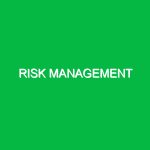Introduction to ISO 45001
ISO 45001 is an international standard that sets out the requirements for an occupational health and safety (OH&S) management system. It is designed to help organizations improve employee safety, reduce workplace risks, and create better, safer working conditions. Introduced in March 2018, ISO 45001 replaced the earlier OHSAS 18001 standard, bringing a more holistic and proactive approach to managing health and safety in the workplace.
In today’s fast-paced work environment, the relevance of ISO 45001 cannot be overstated. Companies are increasingly recognizing the importance of employee well-being—not just for compliance but as a critical component of operational efficiency and corporate responsibility. By implementing ISO 45001, organizations can demonstrate their commitment to health and safety, thereby enhancing their reputation and fostering a culture of safety.
The Importance of ISO 45001 in HSE
ISO 45001 is more than just a regulatory requirement; it is a strategic tool that can significantly impact an organization’s performance. Here’s why it matters in the HSE domain:
1. **Risk Management**: ISO 45001 encourages organizations to identify, assess, and control workplace hazards, leading to a proactive approach in mitigating risks.
2. **Employee Engagement**: By involving employees in the development and implementation of safety policies, organizations can foster a culture of safety that boosts morale and productivity.
3. **Legal Compliance**: With increasing legislation around health and safety, following ISO 45001 can help organizations stay compliant, avoiding penalties and legal issues.
4. **Continuous Improvement**: The standard promotes a cycle of constant assessment and improvement, ensuring that health and safety practices evolve with changing workplace dynamics.
A personal experience I encountered while working in the manufacturing sector illustrates this. Our company implemented ISO 45001, and within months, we noticed a significant reduction in workplace accidents. Employees felt empowered to speak up about safety concerns, leading to actionable changes that improved our overall safety culture.
Identifying Hazards and Risks Associated with ISO 45001
Understanding potential hazards is essential for effective risk management. ISO 45001 emphasizes a comprehensive approach to identifying and mitigating risks, including:
1. Physical Hazards
These include slips, trips, and falls, which are among the most common workplace accidents. The risk is heightened in environments like construction sites or manufacturing plants where heavy machinery and tools are in use.
2. Chemical Hazards
Exposure to hazardous chemicals can occur in various industries, leading to respiratory issues, skin irritations, or long-term health problems. The standard requires organizations to evaluate the risks associated with chemical exposure and implement measures to control them.
3. Ergonomic Hazards
Poor workstation design can lead to repetitive strain injuries or musculoskeletal disorders. ISO 45001 encourages organizations to assess ergonomic risks and make necessary adjustments to work processes.
4. Biological Hazards
These include exposure to viruses, bacteria, or other infectious agents. In the wake of the COVID-19 pandemic, organizations have had to prioritize biological hazards more than ever, implementing protocols to protect employees.
5. Psychosocial Hazards
Work-related stress, bullying, and harassment are significant risks that can impact mental health. ISO 45001 emphasizes the importance of addressing these issues, creating a supportive work environment.
By systematically identifying these hazards, organizations can develop a robust safety management system.
Safety Precautions and Best Practices Related to ISO 45001
Implementing ISO 45001 requires actionable steps to mitigate identified risks. Here are some best practices that organizations can adopt:
1. Conduct Regular Risk Assessments
Organizations should perform regular and thorough risk assessments to identify potential hazards. This process should involve employees at all levels, ensuring that those who are most familiar with the risks contribute to the assessment.
2. Provide Training and Awareness Programs
Continuous education is paramount. Organizations must offer training sessions on safety protocols, emergency procedures, and the importance of reporting hazards. Employees should feel confident in their ability to recognize and address risks.
3. Implement Safe Work Procedures
Develop clear, documented procedures for high-risk tasks. For instance, if working with heavy machinery, there should be specific guidelines on safe operation, maintenance, and emergency shutdown procedures.
4. Foster Open Communication
Encourage a culture of openness where employees feel comfortable reporting safety concerns without fear of retaliation. Regular safety meetings can help facilitate this dialogue.
5. Monitor and Review Performance
Establish key performance indicators (KPIs) to monitor safety performance. Regularly review these metrics to identify trends and areas for improvement. This ongoing evaluation is a cornerstone of continuous improvement.
Regulations and Standards Governing ISO 45001
ISO 45001 aligns with various regulations and standards that govern occupational health and safety. Key regulations include:
1. OSHA Standards
In the United States, the Occupational Safety and Health Administration (OSHA) sets and enforces standards to ensure safe and healthful working conditions. ISO 45001 can serve as a framework to achieve compliance with OSHA regulations.
2. EU Occupational Health and Safety Directives
In Europe, various directives outline minimum safety and health requirements at work. ISO 45001 helps organizations align their health and safety management systems with these directives.
3. National Regulations
Many countries have their regulations that govern workplace safety. ISO 45001 can complement these regulations, providing a structured approach to health and safety management.
Conclusion: The Future of Workplace Safety with ISO 45001
As we move towards a future where employee well-being is increasingly prioritized, ISO 45001 stands out as a vital framework for organizations aiming to enhance their health and safety management systems. The benefits of adopting this standard extend beyond compliance; they encompass risk reduction, enhanced employee morale, and improved overall productivity.
In my experience, the shift towards prioritizing HSE through ISO 45001 not only transformed workplace culture but also led to tangible improvements in operational performance. Companies that embrace this standard will not only safeguard their employees but also position themselves as leaders in corporate responsibility.
In summary, ISO 45001 is not just an obligation; it is an opportunity—a chance to create safer, more productive workplaces for everyone involved. By understanding and implementing the principles of ISO 45001, organizations can navigate the complexities of health and safety in a modern world, ensuring a brighter and safer future for all.


